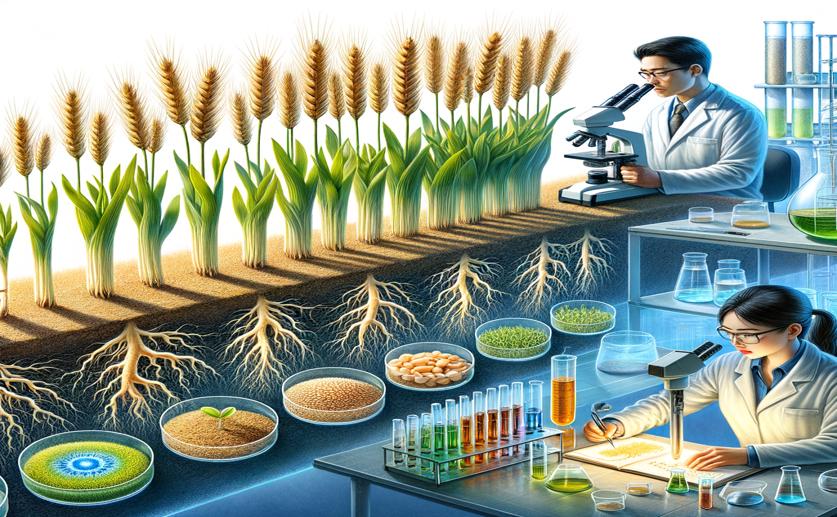
Improving Spring Wheat Genetics Through Breeding Experiments
Greg Howard
26th April, 2024

Image Source: Natural Science News, 2024
Key Findings
- Study in Prague evaluated 60 spring durum wheat genotypes for grain quality and suitability for Czech climate
- Six genotypes showed high grain quality, suitable for bread-making, comparable to modern cultivars
- Two genotypes had desirable gluten proteins, indicating potential for high-quality bread production
GeneticsPlant ScienceAgriculture
References
Main Study
1) The benefits of experimental breeding research genotypes for the genetic resources of spring durum wheat
Published 25th April, 2024
https://doi.org/10.1007/s10722-024-01946-z
Related Studies
2) From ancient to old and modern durum wheat varieties: interaction among cultivar traits, management, and technological quality.
3) Allelic variation of high molecular weight glutenin subunits of bread wheat in Hebei province of China.
Journal: Journal of genetics, Issue: Vol 97, Issue 4, Sep 2018
4) Changes in duration of developmental phases of durum wheat caused by breeding in Spain and Italy during the 20th century and its impact on yield.



 11th April, 2024 | Jenn Hoskins
11th April, 2024 | Jenn Hoskins